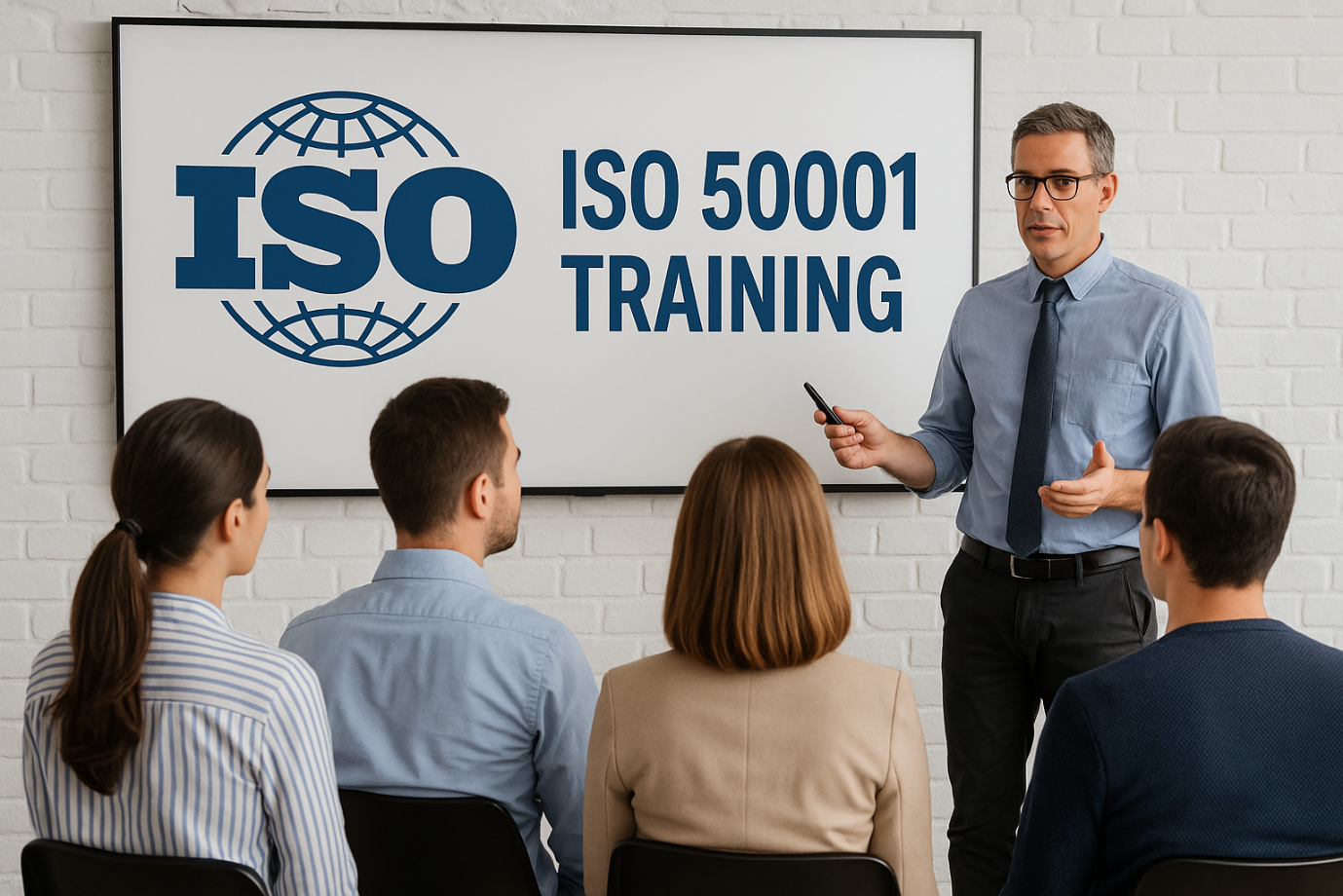Why ISO 50001 Training Isn’t Just Another Checkbox
You’re probably thinking, “Another training? Really?” I get it. Your schedule’s packed, and the last thing you need is a course that feels like a corporate formality. But ISO 50001 isn’t about sitting through endless lectures or memorizing jargon. It’s a globally recognized standard for energy management systems (EnMS) that gives you a framework to track, analyze, and optimize energy use. The training? It’s the key to making that framework work for your facility.
Imagine this: you’re running a manufacturing plant, and your energy bills are creeping up faster than a summer electric meter. You know there’s waste somewhere—maybe it’s those old inefficient lighting—but pinpointing it feels like finding a needle in a haystack. ISO 50001 training teaches you how to spot those energy hogs, measure their impact, and create a plan to tackle them. It’s practical, hands-on, and, honestly, kind of empowering when you see the savings stack up.
What’s in It for You?
Here’s the thing: energy isn’t just a line item on your budget. It’s a variable you can control—if you know how. ISO 50001 training gives you:
- Clarity: Learn how to measure energy performance with tools like energy baselines and performance indicators . No more guessing what’s driving your costs.
- Confidence: Understand how to set realistic energy goals that align with your facility’s operations, not some pie-in-the-sky corporate mandate.
- Control: Gain skills to implement changes, from retrofitting equipment to tweaking operational schedules, that actually move the needle.
- Credibility: Show your team (and your boss) that you’re not just keeping the lights on—you’re driving efficiency like a pro.
And let’s not forget the bigger picture. With sustainability on everyone’s radar—think spring 2025, when ESG reports are due and stakeholders are asking tough questions—ISO 50001 training helps you stay ahead of the curve. It’s like having a playbook for proving your facility’s commitment to green practices without breaking a sweat.
What Does ISO 50001 Training Actually Look Like?
So, what’s the training itself like? Picture a mix of classroom learning (or virtual sessions, because, you know, Zoom’s still a thing) and real-world application. Most programs are designed for busy managers like you, so they’re flexible—think one- to three-day workshops, online modules, or blended formats. Here’s a quick breakdown of what you’ll cover:
The Nuts and Bolts of an EnMS
First, you’ll get the lay of the land. The training starts with the basics of an Energy Management System (EnMS). You’ll learn how to map out your facility’s energy flows—where it’s used, wasted, or just plain mismanaged. It’s like creating a treasure map, except the treasure is thousands of dollars in savings.
Energy Performance Indicators (EnPIs)
Next up, you’ll dig into EnPIs. These are your yardsticks for measuring energy efficiency. For example, if you’re running a commercial building, you might track energy use per square foot. In a manufacturing plant, it could be energy per unit of production. The training shows you how to pick the right metrics and use them to spot trends. Ever wonder why your energy bill spikes every July? EnPIs will help you figure it out.
Action Plans That Actually Work
Here’s where it gets fun. You’ll learn how to turn data into action. The training walks you through creating energy-saving strategies, like optimizing equipment schedules or upgrading to energy-efficient tech. It’s not about throwing money at new gadgets; it’s about making smart choices. For instance, swapping out old fluorescent lights for LEDs might sound basic, but pair that with a smart control system, and you’re suddenly saving 20% on lighting costs. True story—I saw a manager in a Chicago office building do this and cut their energy bill by enough to fund a staff pizza party every month.
Engaging Your Team
You can’t do this alone, and the training knows it. You’ll get tips on rallying your team—maintenance crews, operators, even the C-suite—to buy into the energy plan. It’s about creating a culture where everyone’s looking for ways to save energy, not just you. Think of it like getting your family to turn off the lights when they leave a room—except now it’s your entire facility.
Why Bother? The Real-World Payoff
Okay, let’s talk dollars and cents. Energy costs are no joke, especially in 2025 when global demand is pushing prices higher than a rooftop solar panel in July. ISO 50001 training isn’t just about feeling good—it’s about saving serious cash. A well-implemented EnMS can cut energy costs by 10-20%, sometimes more, depending on your starting point. For a mid-sized manufacturing plant, that could mean six figures in savings annually. For a commercial building, it might be enough to offset a rent hike.
But it’s not just about money. There’s a certain pride in running a facility that’s lean, green, and efficient. You’re not just a manager; you’re a problem-solver who’s making a difference. Plus, with tenants, investors, or regulators breathing down your neck about sustainability, ISO 50001 training gives you the tools to answer their questions with hard data, not vague promises.
A Quick Tangent: The Human Side of Energy Management
You know what’s wild? Energy management isn’t just about machines—it’s about people. I was chatting with a facility manager in Texas last year, and she told me her biggest win wasn’t a new boiler or fancy software. It was getting her team to care. After her ISO 50001 training, she started small—weekly “energy huddles” where her crew shared ideas. One guy suggested shutting down unused conveyor belts during lunch breaks. Saved them $5,000 a year. Little changes, big impact. That’s the kind of thing you’ll learn to inspire.
Choosing the Right Training for You
Not all ISO 50001 training is created equal, so let’s talk about picking the right one. You’ve got options, from in-person workshops by organizations like the American Society for Quality to online courses from platforms like Coursera . Here’s what to look for:
- Practical Focus: Skip the overly academic stuff. Look for programs that emphasize real-world applications, like case studies or simulations tailored to your industry.
- Flexible Delivery: If you’re juggling a million tasks, online or hybrid courses let you learn at your own pace. Some providers, offer self-paced modules you can tackle during downtime.
- Expert Instructors: You want trainers who’ve been in the trenches—people who’ve managed facilities, not just read about them. Check reviews or ask for instructor bios.
- Certification Prep: If you’re aiming for an ISO 50001 auditor or lead implementer certification, make sure the course aligns with those goals.
Getting Started: Your Next Steps
Feeling inspired? Here’s how to jump in. First, do a quick audit of your facility’s energy use. No need to get fancy—just grab your latest utility bills and look for patterns. Are there spikes you can’t explain? Equipment running when it shouldn’t? That’s your starting point. Then, research training providers. If you’re in a pinch, online platforms like Energy Institute have affordable options.
Once you’re trained, start small. Use what you learned in training to measure the impact. Before you know it, you’ll be the go-to person for energy efficiency, and your facility will be running smoother than ever.
A Final Thought: Why This Matters Now
In spring 2025, with energy prices fluctuating and sustainability goals looming, there’s no better time to get serious about energy management. ISO 50001 training isn’t just a course—it’s a mindset shift. It’s about seeing your facility not as a collection of systems but as a living, breathing operation you can fine-tune. So, why wait? Your next big win could be just one training session away.







